Parks, forests and dunes
The Hague has a multitude of forests, estates, dunes and parks. The greenery helps make it a pretty and pleasant city. The green areas ensure that a large variety of animal, plant and tree species can make their home in the city (biodiversity).
The Hague’s nature areas are part of the Begin external link: Nationaal Park Hollandse Duinen(External link), end external link..
Look at which parks, forests, estates and dunes are located in The Hague.
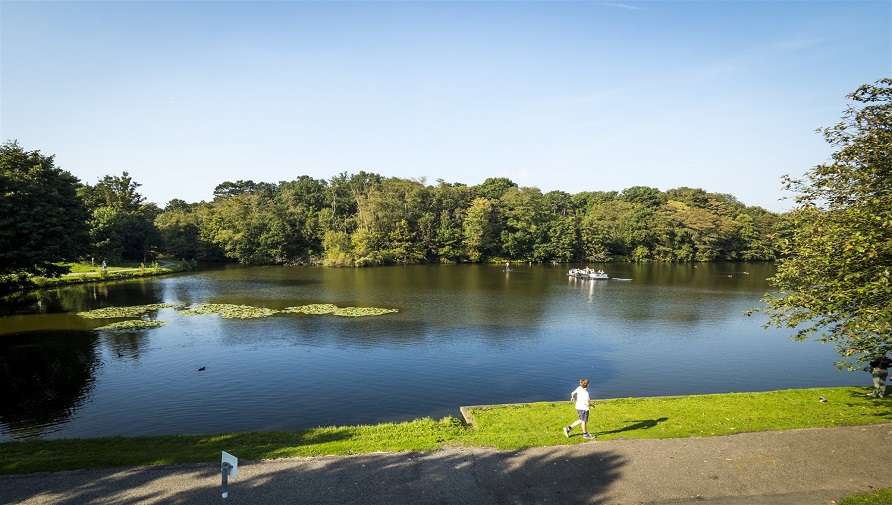
Parks
Zuiderpark is a public park which originated in the 1920s. Many residents of The Hague come here for a walk or to go skateboarding or cycling.
The park has a number of special spots. For example, De Villierskopje viewing hill, the medieval duck decoy and Begin link: De Heimanshof, end link. landscape garden. The Landengebied arboretum (a botanical garden devoted to trees) has 695 different tree species.
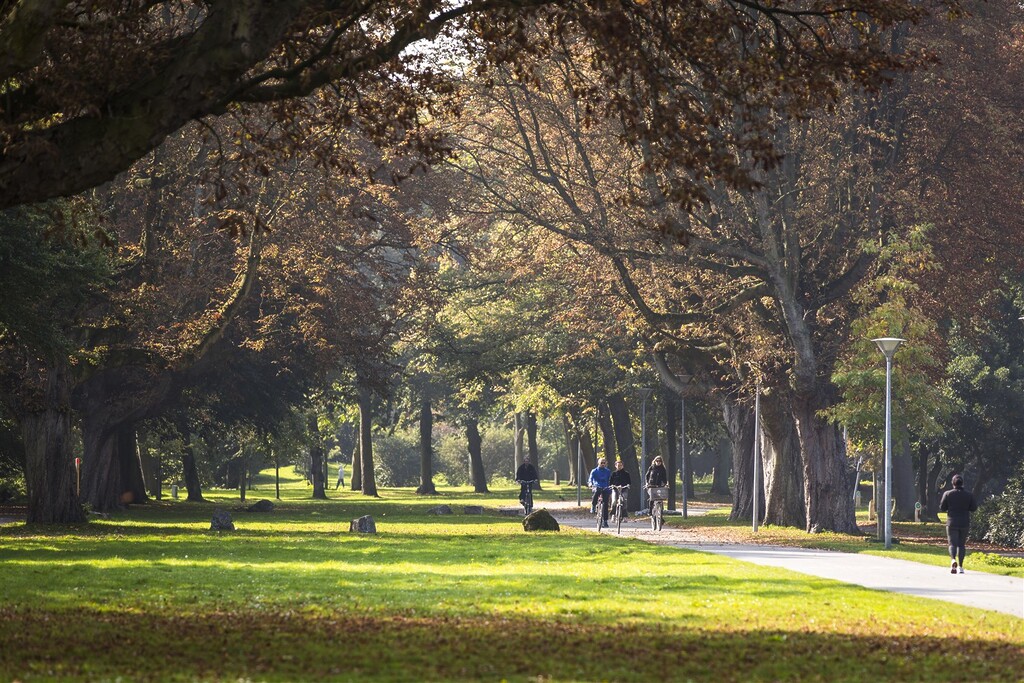
What you can do there
- Have a picnic or Begin link: barbecue, end link. . There are special spots for barbecuing.
- Visit big events, such as the Milan Festival.
- Attend a concert or theatre performance in the open-air Zuiderparktheater.
- Skateboard in the park, on the mini ramp or quarter pipe. There is also a roller skating rink.
- Play at the Western playground, in 1 of the fields or at the Begin link: Zuiderpret natural playground, end link. .
- Pet animals at Begin link: De Herweijerhoeve city farm, end link. . There are also vegetable gardens here.
- Take a walk in the Landengebied arboretum.
- Visit De Heimanshof scientific garden. There are different walks. You can also take an excursion or join a tour.
- Look at art: There are sculptures in the park from Begin external link: Stroom Den Haag(External link), end external link.
- Creative people can design graffiti on the Wall of Fame.
- Go swimming in the Begin link: Zuiderpark swimming pool, end link. .
More information
More information can be found on Begin external link: denhaag.com(External link), end external link..
Go to Begin external link: Zuiderpark Den Haag(External link), end external link. to see all of the activities in the park.
Would you like more information about the arboretum? Request the brochure ‘Wandelen door het Landengebied in het Zuiderpark’ by sending an email to Begin link: groenbeleid@denhaag.nl, end link. .
The rose garden, the ponds and the field make it worthwhile to visit Westbroekpark.
More than 300 different species of roses bloom in Westbroekpark. And there are about 20,000 rose bushes. In addition the park has a permanent garden with 150 species of plants. And there is a playground and boat rental facility.
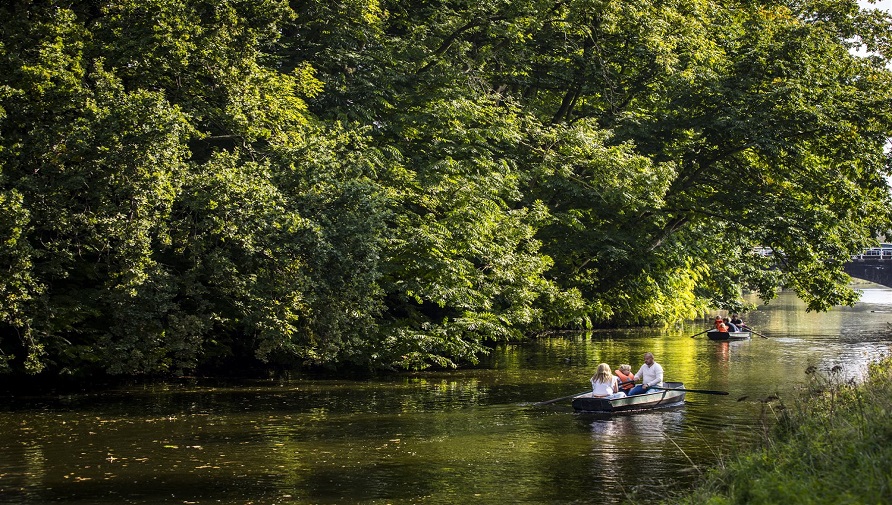
What you can do there
- Play at the playground.
- Play or Begin link: have a barbecue, end link. on the field.
- The International Rose Competition takes place every year.
- There are restaurants and a drinking water fountain.
- The tea room and rowboat rental are open in the summer.
Watch the video Enjoy the roses in one of the most beautiful parks in The Hague (YouTube channel of the municipality)(External link)
More information
The entrance to Westbroekpark is on the Kapelweg. Here you can find bicycle parking and a car park. You can also get to the park by tram or bus.
More information can be found on Begin external link: denhaag.com(External link), end external link..
Madestein is a recreational green space. There are many things you can do in this green space. And all sorts of ways to relax.
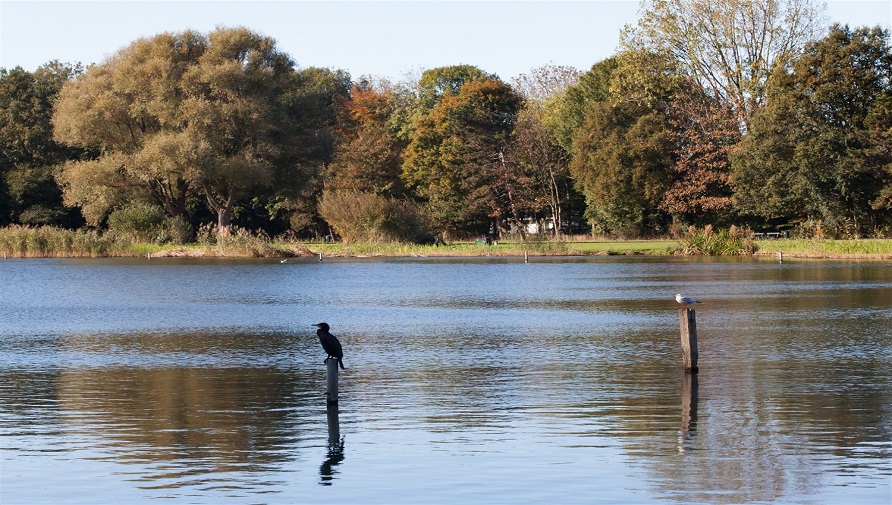
What you can do there
- Cycle, walk and go horseback riding.
- Visit 1 of the pond beaches with sunbathing and play areas.
- Look at animals and pick fruit at Begin external link: Boerderij Pluk!(External link), end external link.. There is also a cafe.
- Play sports at 1 of the clubs or sport complexes.
- Go camping at the campground.
Rules
The municipality has created user zones in part of Madestein. There are a number of rules in effect:
- You are not allowed to barbecue on the grassy field between the Oostmadeweg and the Madepolderweg. Your dog is allowed to roam freely here.
- Dogs are not allowed to roam freely in the campground area between 1 May and 1 October. You can Begin link: barbecue, end link. there in this period.
More information
There are many entrances around Madestein. Are you coming on foot or by bicycle? Then you can enter the area by using the bridge over the Lozerlaan. You can also get to the area by tram, bus and car. There are different car parks, for example at the Madesteinweg or Madepolderweg.
More information can be found on Begin external link: denhaag.com(External link), end external link..
The Uithof is a recreational nature area. It is 1 of the largest green spaces in The Hague.
The area is host to 355 different species of plants, fish and birds. There are Highland cattle grazing in the area.
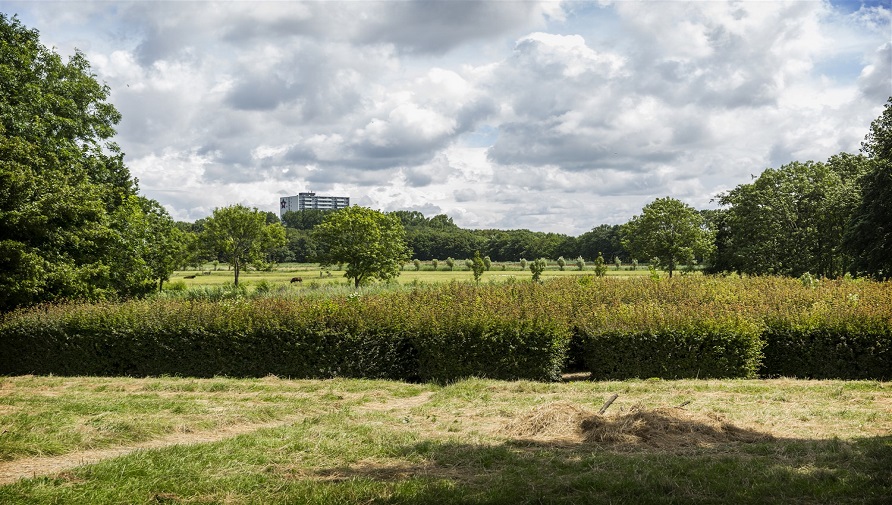
What you can do there
- Cycle, walk and go horseback riding.
- There is a maze.
- You can visit the orchard. You can come pick fruit when the fruit is ripe. You need to sign up for this.
- Go to the ice rink, indoor ski slope or climbing hall.
More information
Cyclists, hikers and riders can enter the area via the Lozerlaan, Erasmusweg, Nieuweweg and via the bridge over the Wennetjessloot. You can park your bicycle by the main entrance on the Lozerlaan. You can also get to the Uithof by tram, bus and car. You can park on the Lozerlaan.
More information can be found on Begin external link: denhaag.com(External link), end external link.. Or look at the Begin external link: website De Uithof natuurlijk(External link), end external link..
The Molenvlietpark is located at the edge of the city, between Leidschenveen-Ypenburg and Rijswijk. It is a new park. There is a lot of greenery and water. The park is easily accessible for pedestrians.
There are many native species of trees, such as beech, oak and hornbeam.
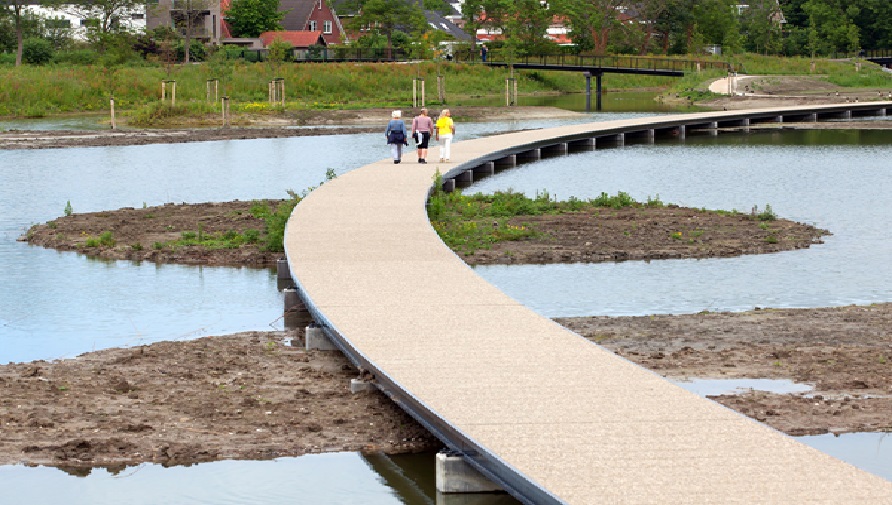
What you can do there
- Walk and cycle.
- Play at the playground or on the raft.
- There is a wildlife garden. This is a garden with wild animals and plants from the area.
More information
The Molenvlietpark has entrances on the Molenslootpad and the Laan van Zuid Hoorn. You can enter only on foot. You can get to the park by tram and bike.
The Paleistuin is located in the city centre, next to Noordeinde Palace, the Royal Stables and the Royal Archives. Many residents and tourists enjoy this city park.
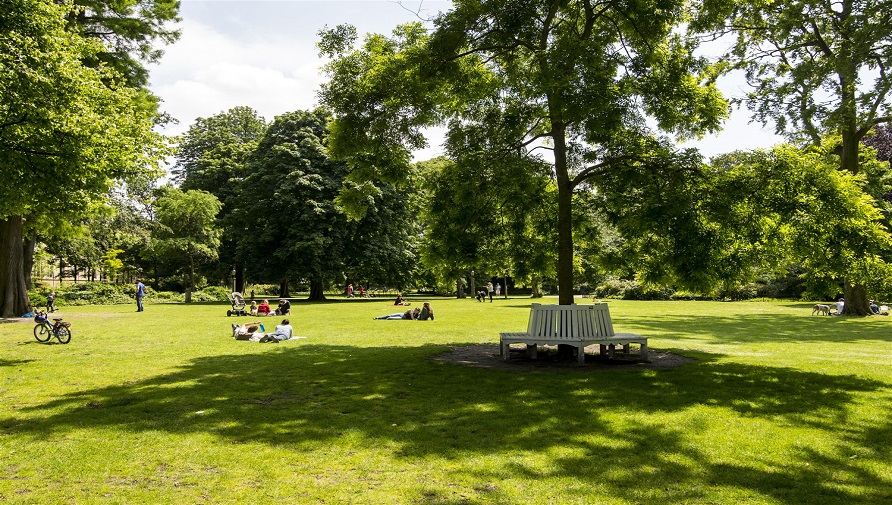
What you can do there
- Walk and have a picnic.
- Hunt for art objects.
- There is a maze bordering on Noordeinde Palace.
More information
More information can be found on Begin external link: denhaag.com(External link), end external link..
Park Sorgvliet is located on the Scheveningseweg. It is a national heritage site. The Central Government Real Estate Agency (Rijksvastgoedbedrijf) manages the park. Park Sorgvliet was created in 1650 and belonged to the Catshuis. This is where Jacob Cats (1577-1660), the grand pensionary of Holland, had his official residence. The park is not freely accessible. Visitors must purchase an annual pass to visit it.
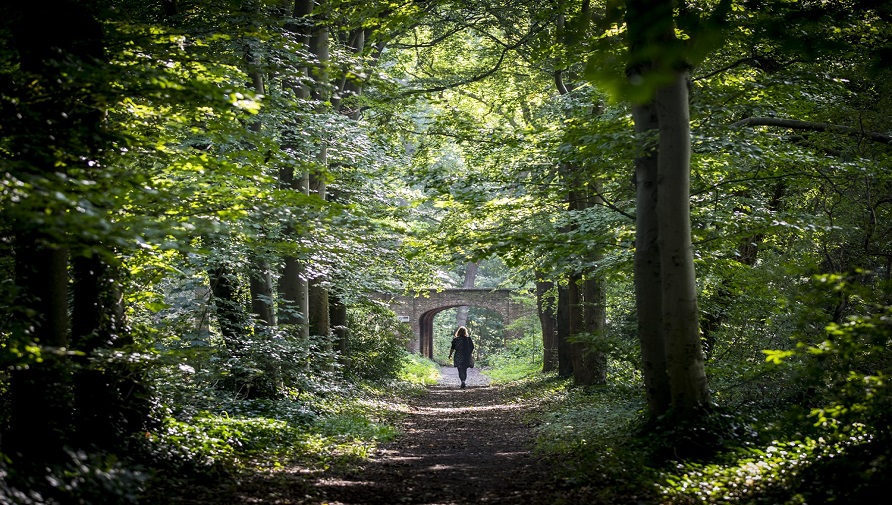
More information
Read more on the Begin external link: website of the Rijksvastgoedbedrijf.(External link), end external link.
Estates
The Clingendael Estate is located between The Hague and Wassenaar. Here you can find buildings and gardens with impressive trees and ponds. The landscape design from 1818 can still be seen in the estate. The most famous part of Clingendael is close the tea room: the Japanese Garden. There you will see rare trees and plants.
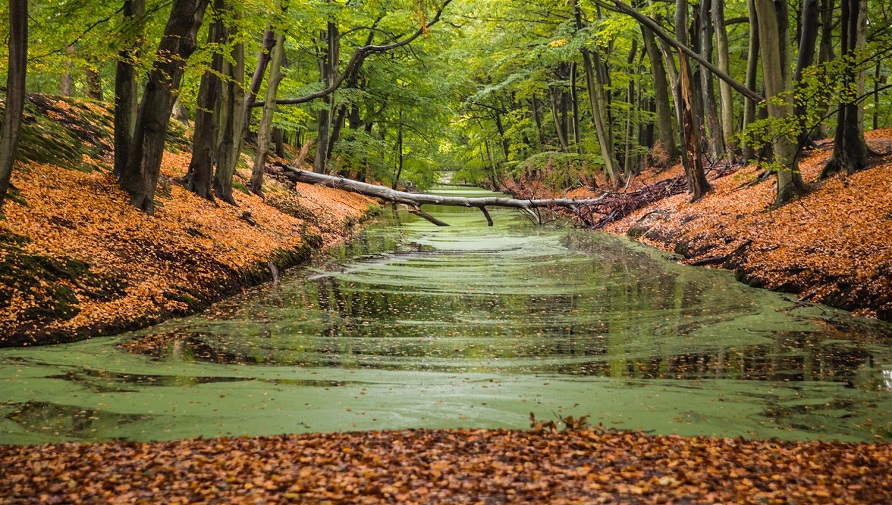
What you can do there
- Walk: there are walking paths of 2 and 4 kilometres.
- Horseback riding: a bridle path goes through the dune forest.
- Play at the playground or in the field.
- Look at the landscape design in the Japanese Garden, the Old Dutch Garden and the Sterrenbos.
- Take a guided tour of Clingendael and the Japanese Garden.
Rules
Take care that you do not damage anything. Obey the park rules:
- Barbecues and open fires are not permitted.
- Rubbish most be disposed of in the waste bins.
- Dogs must be on a leash, except for in the designated free-run areas.
- Cars and motorcycles are not allowed to enter Clingendael.
More information
The main entrance is on the Wassenaarseweg. You can also enter this estate from the Van Alkemadelaan, Ruychrocklaan and Van Ouwenlaan. Are you coming by bike or by car? Then you can park by the main entrance on the Wassenaarseweg. There is also a bus stop near the estate.
More information can be found on Begin external link: denhaag.com(External link), end external link.. Or look at the page about the Begin link: Japanese Garden, end link. .
The Ockenburgh Estate is a more than 350 year old country estate with long lanes, old trees and a country manor which was recently renovated. The hyacinth forest which blooms around April is also worth a visit.
There is an old country manor on the Ockenburgh Estate. And there are also earthen rampart walls from the Middle Ages.
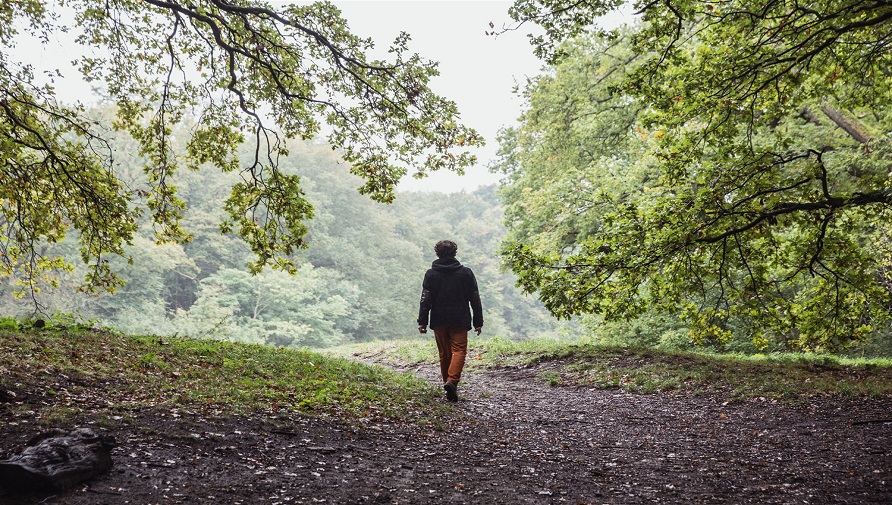
What you can do there
- Walk on the walking paths.
- Play on the field and at the playground.
- Go horseback riding on the bridle paths.
More information
Read more information on the Begin external link: website of the Zuid-Hollands Landschap(External link), end external link..
The Oosterbeek Estate is located next to the Clingendael Estate. The estate is located in Wassenaar, but is managed by The Hague. There is a park with a forest around it. There are green grassy fields and a pond. Different species of trees, shrubs and special plants grow on the estate.
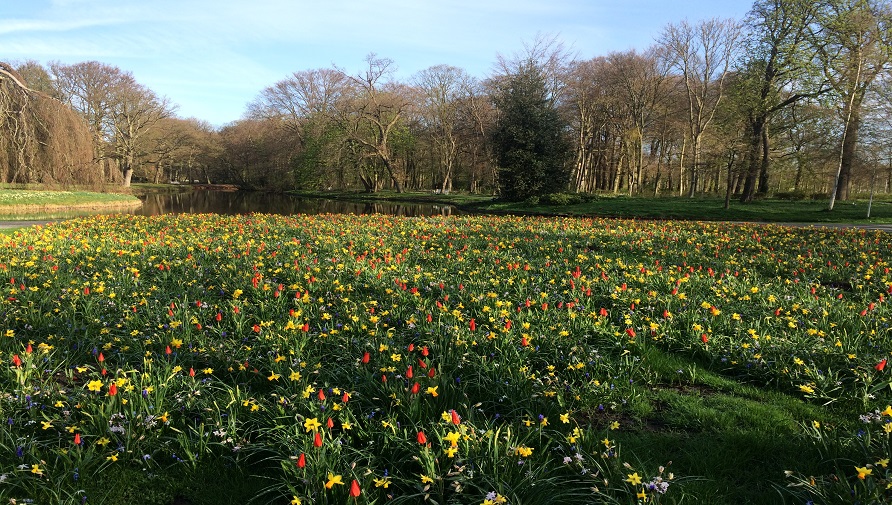
What you can do there
- Walk: there are walking paths of 2 and 4 kilometres through Oosterbeek and Clingendael.
- Cycle: this is allowed only on the entrance road to the estate.
More information
You can reach the Oosterbeek Estate via Landgoed Clingendael, the Van Brienenlaan and the Benoordenhoutseweg.
Would you like to know more about the Oosterbeek Estate? Request the brochure ‘Welkom op landgoed Oosterbeek’. Send an email to Begin link: groenbeleid@denhaag.nl, end link. .
The Marlot and Reigersbergen estates are located between The Hague and Wassenaar. These 2 estates are connected to each other at 4 spots. You can walk from one estate to the other using the bridges. Reigersbergen was bombed during the Second World War. The contours of the country manor and the garden can still be seen.
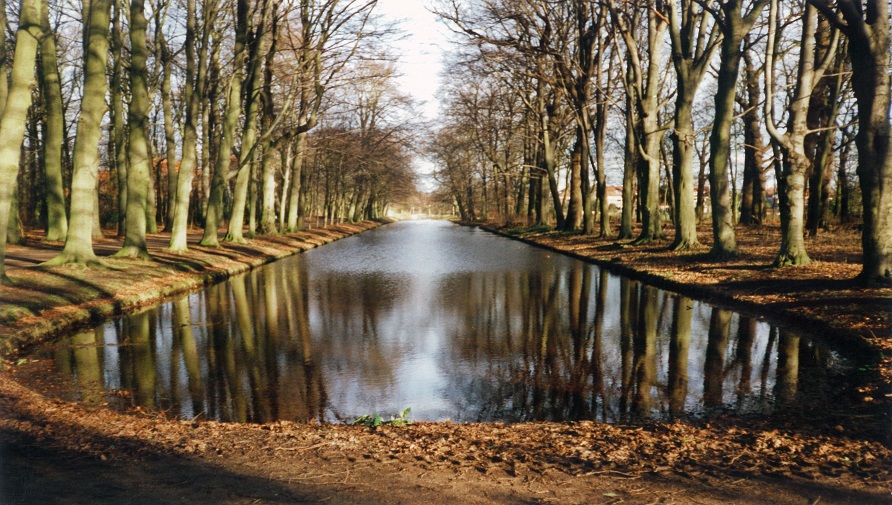
What you can do there
- Look at the butterfly garden. The garden is not accessible but you can still look at it from behind the gate.
- Walk: there are many walking paths and pretty routes.
- Play at the playground.
- Eat or drink something in the cafe on the Leidsestraatweg.
- Cycle: via the Leidsestraatweg you cycle across the historic arched bridge. You will then be on a cycle path which leads from Marlot to the Bezuidenhoutseweg.
More information
The main entrance of the estates is on the Marlotlaan. You can also reach the estates via the Bezuidenhoutseweg, Hofzichtlaan and the Leidsestraatweg.
Meer en Bos was once a country estate for rich aristocratic families. It is 1 of the smaller estates in The Hague. The estate has a pond (Segmeer). There are different species of trees, shrubs and plants.
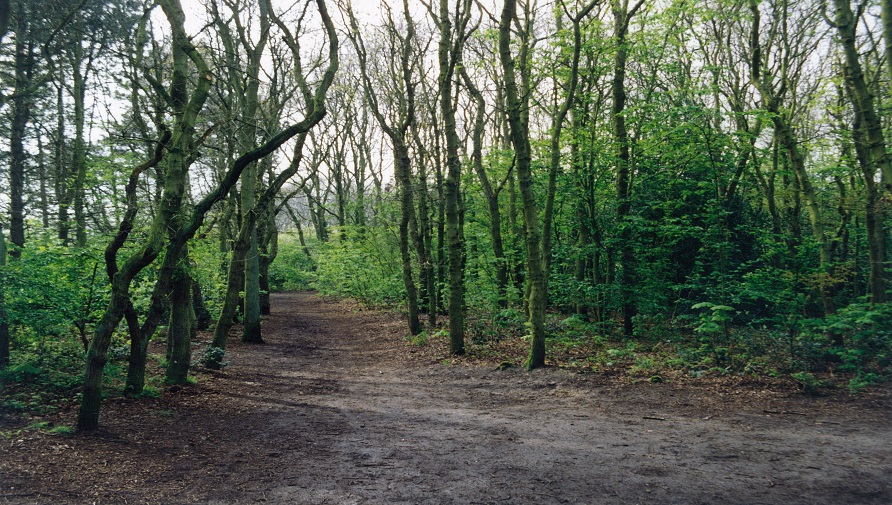
What you can do there
- Walk along the meandering paths.
- Play at the playground.
More information
Meer en Bos can be reached via the Heliotrooplaan and the Laan van Meerdervoort. The main entrance is on the Heliotrooplaan.
The Oostduin and Arendsdorp estates are located in the Haagse Hout district. An office building and a rest home are located on part of the estate. There is not much left of the old character of the country estate. There are, however, still some old trees and a few small buildings, such as the garden/tea house.
What you can do there
- Walk.
- Play at the playground.
More information
The entrances to the Oostduin and Arendsdorp estates are on the Oostduinlaan, Wassenaarseweg and the Floris Grijpstraat.
Forests and dunes
The Scheveningse Bosjes is a forest planted on a dune complex. The forest was once the hunting grounds of the king. There are many old monuments there. Such as the Indies Monument and the Jewish Cemetery. And there is a pond.
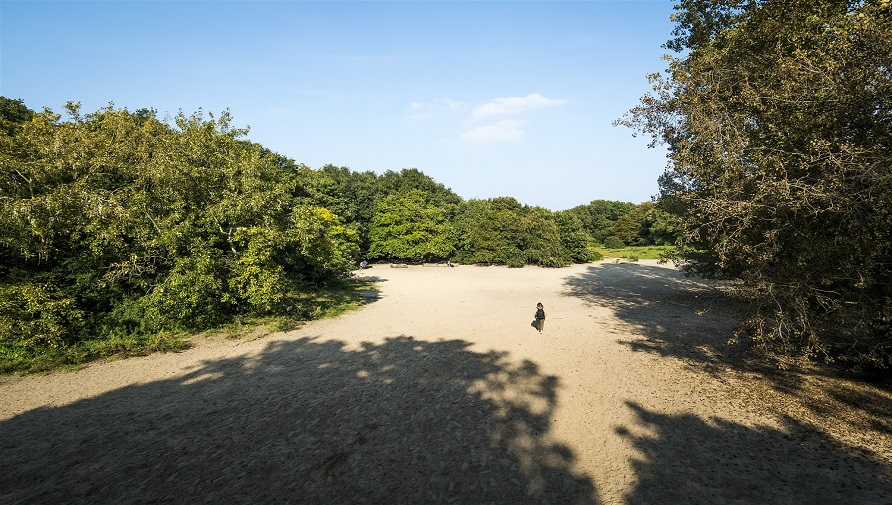
What you can do there
- Walk or run along the meandering paths.
- Cycle through the forest.
- Go horseback riding on the bridle paths.
- Play at the sandy playground.
- Go skateboarding in the skatepark.
More information
The entrances to the Scheveningse Bosjes are on the Arie van der Spuyweg (close to the playground), Adriaan Goedkooplaan, Professor B.M. Teldersweg and Kerkhoflaan.
Like the Scheveningse Bosjes the Nieuwe Scheveningse Bosjes were planted on a dune complex. Many different kinds of animals live there. Such as the red squirrel, hedgehogs, rabbits and 32 species of birds. From this forest you can walk directly into the dunes.
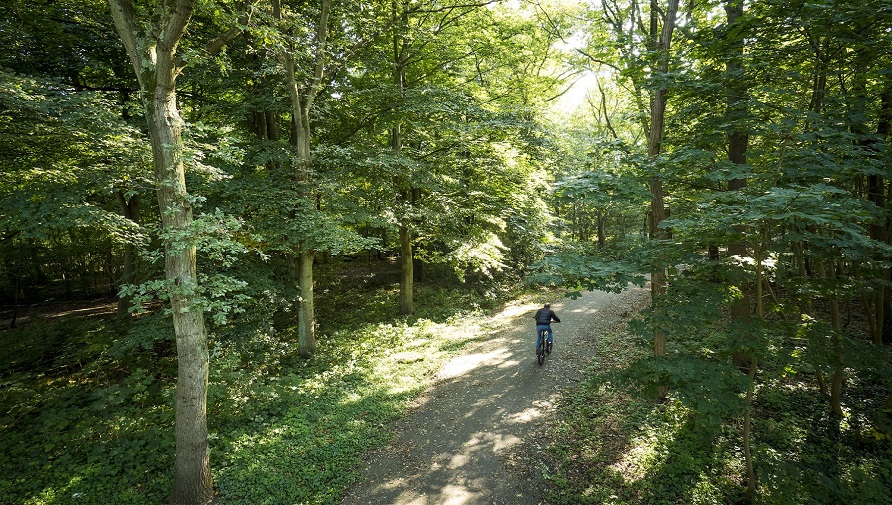
What you can do there
- Walk on the walking paths.
- Play at the playground.
- Go horseback riding on the bridle paths.
- Visit the Begin external link: Atlantikwall Museum(External link), end external link..
More information
The Nieuwe Scheveningse Bosjes are located between the Doorniksestraat, Pompstationsweg, Badhuisweg and Brusselselaan. The entrances are also in these streets.
The Sint Hubertuspark has a forest and open sandy patches. There are many different trees and plants. The park is special thanks to the height differences.
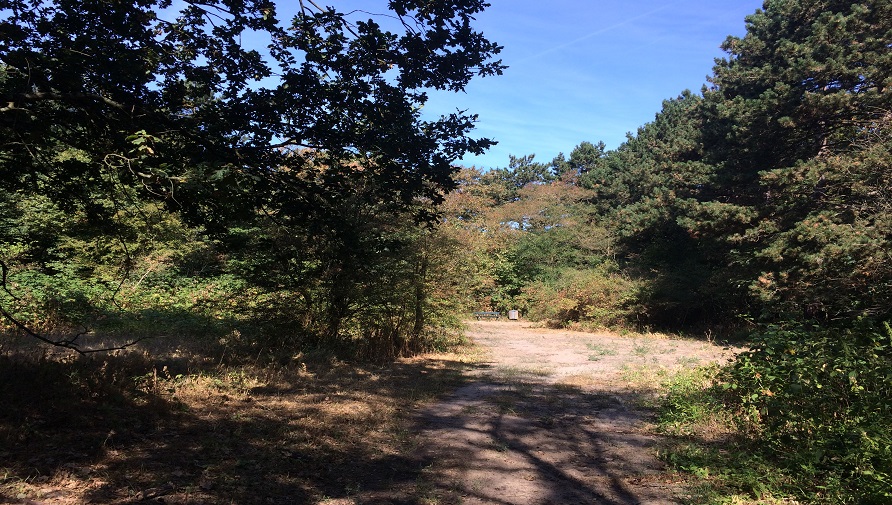
What you can do there
- Walk along the meandering paths.
- Go horseback riding on the bridle paths.
- Look at the view from the highest point, the 30-metre high Bloedberg.
More information
The park has different entrances: via the Kwekerijweg, Plesmanweg, Sint Hubertusweg, Waalsdorperweg, Klatteweg and Van Voorschotenlaan.
Riders can enter the park via the Van Voorschotenlaan, Plesmanweg and Sint Hubertusweg.
Parking is available around the park. You can also get to the Sint Hubertuspark by public transport.
The Bosjes van Pex is an area for many types of recreation. There are many sports grounds.
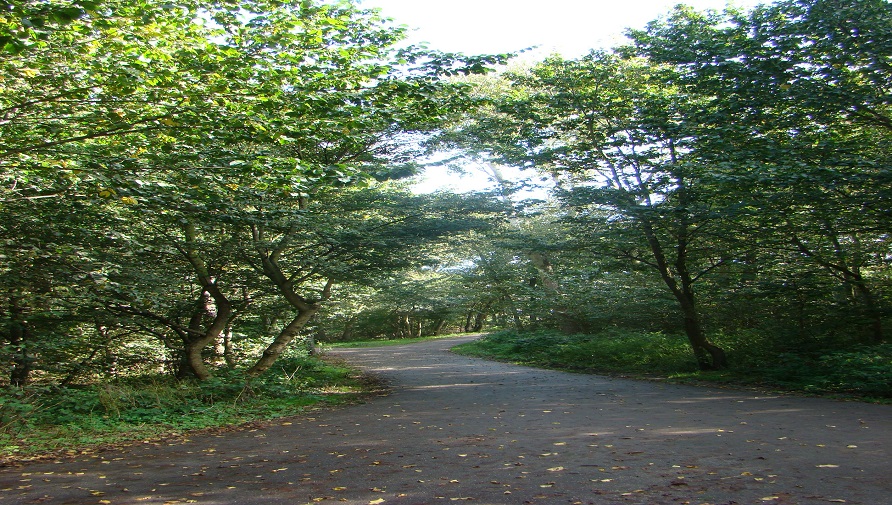
What you can do there
- Cycle or walk on the paths.
- Let dogs roam freely in the free-run area.
- Play on the field or at the playground.
- Go skateboarding on the skateboard track.
- Go horseback riding on the bridle paths.
Rules
Dogs are allowed to roam freely in a large part of the Bosjes van Pex. Signs indicate where.
More information
The Bosjes van Pex are located between the Daal en Bergselaan and Sportlaan. There are several restaurants and riding stables in the forest.
The Bosjes van Poot is an area with a lot of nature and history. It has the Dr. Abraham Schierbeek Tuin, the oldest bird sanctuary in the Netherlands. The Bosjes van Poot is part of the Natura 2000 areas of Westduinpark and Wapendal.
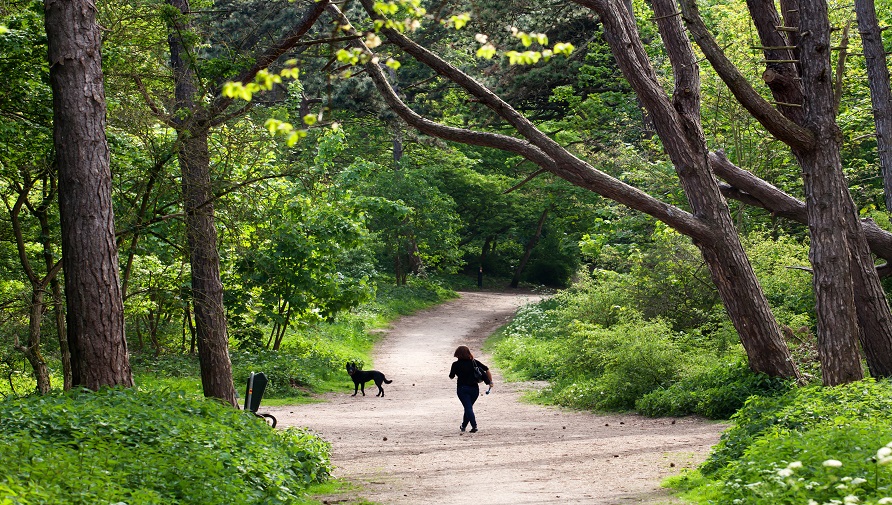
What you can do there
- Walk on the paths.
- Let dogs roam freely.
- Play at the playground.
More information
The Bosjes van Poot are located between Duindorp and the Vogelwijk.
The Haagse Bos borders on the city centre. The forest is centuries old.
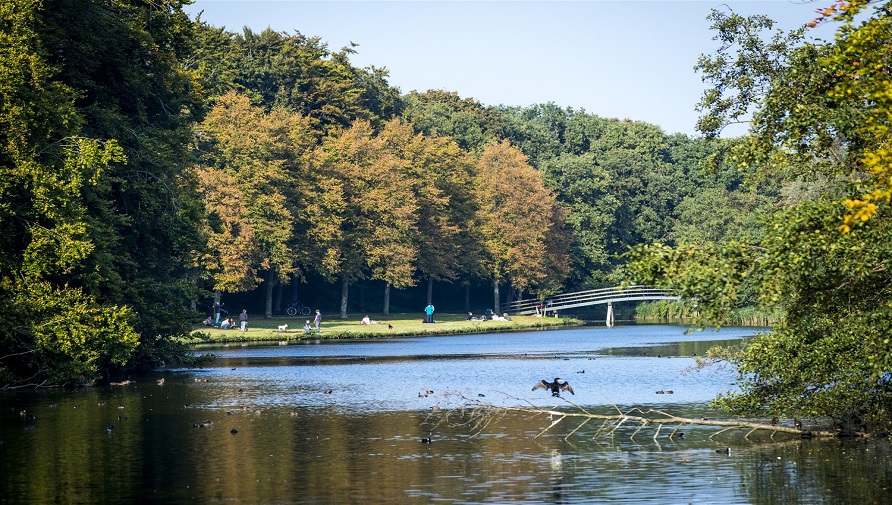
What you can do there
- Cycle or walk on the paths.
- Have a picnic by the water.
- Play at the playground.
More information
The Haagse Bos borders on Malieveld and the Koekamp. Read more information on the Begin external link: website of Staatsbosbeheer(External link), end external link..
Westduinpark is 1 of the largest nature reserves in The Hague. It connects Kijkduin with Scheveningen. Many protected plant and animal species live in the area. Arrangements have been made at the European level to protect them (Natura 2000). Cows graze there (Highland cattle). As of the end of May there are sheep and ponies graze there in the winter. The animals ensure that there is a variety of plants.
Wapendal is the most vulnerable part of Westduinpark. It is therefore closed to visitors. A large part, however, is accessible. For many residents of The Hague the dunes offer a green access to the beach.
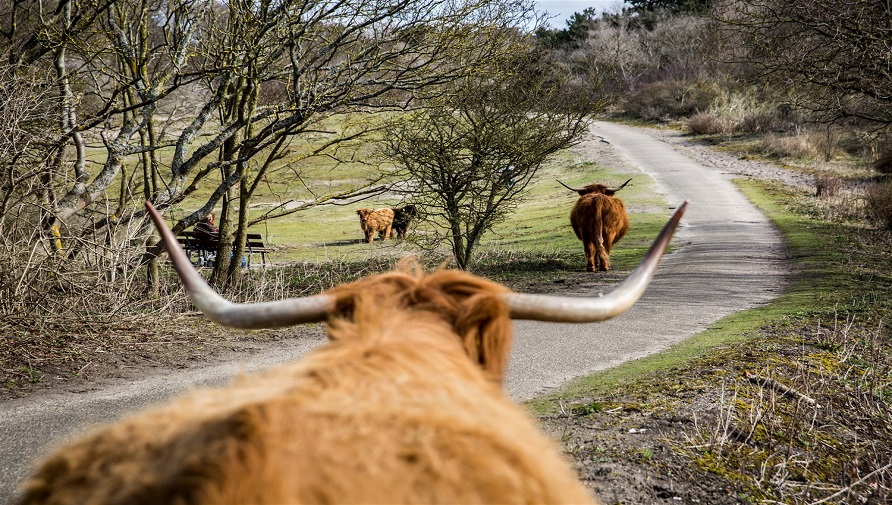
Watch the video Westduinpark and Wapendal, a unique nature reserve in your own city (YouTube channel of the municipality)(External link)
What you can do there
- Cycle or walk on the paths.
- Go on an excursion with the forest ranger in the spring and autumn.
- Play in the play areas, for example in De Berenkuil sandy playground.
- Visit De Jutterskeet Ome Jan beach museum.
- Go horseback riding on the bridle paths.
- The bunkers are open to the public 1 time per year. Read more about Begin external link: Bunker Day(External link), end external link..
Rules
Dogs are allowed to enter Westduinpark, but they need to be on a leash. Your dog is allowed to roam freely in certain spots. Signs indicate where. Read more in Begin link: Dogs, seals and horses on the beach, end link. .
You are not allowed to feed the Highland cows. When you feed them the animals think that people always have food with them. They will then approach people. That can be threatening for visitors and sometimes even dangerous. The municipality will remove dangerous animals from the dune area.
More information
Westduinpark has many entrances. There are entrances on the Duivelandsestraat, De Savornin Lohmanlaan and the Kijkduinsestraat.
You can get to the park by tram or bus. Are you driving? You can park at 1 of the car parks in Kijkduin. For people with a disability the easiest access point is from Kijkduin.
More information can be found on Begin external link: denhaag.com(External link), end external link..
Arrangements for using the space for recreation and nature are in the Begin external link: nota Westduinpark en Wapendal Topnatuur voor de stad! (RIS297407)(External link), end external link. (in Dutch).
Meijendel is the largest continuous dune complex in South Holland. It extends from Scheveningen to Wassenaar. It consists mainly of dunes, ponds, forests and kilometres of sandy beach. Meijendel is part of the Natura 2000 area Meijendel Berkheide.
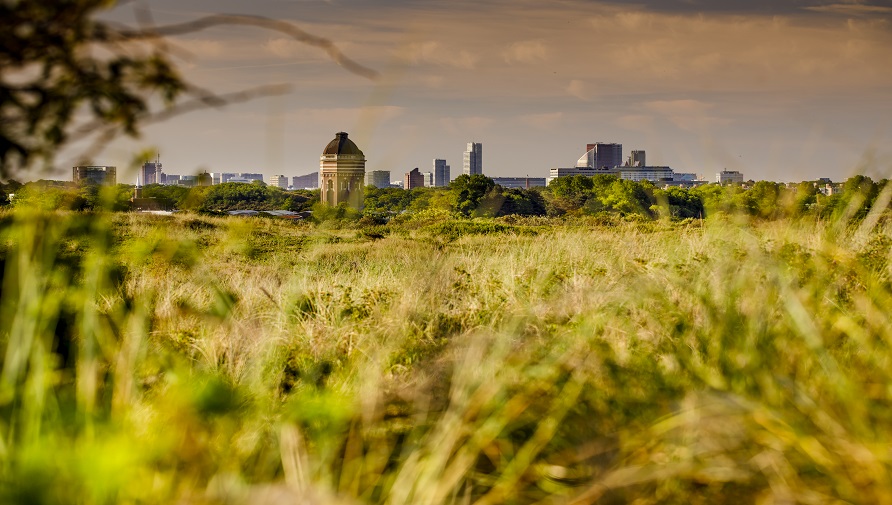
What you can do there
- Walk, cycle and go horseback riding.
- Tapuit Visitors Centre.
- Monkeybos children’s playground.
- Meijendel pancake restaurant.
More information
Meijendel is managed by Dunea. More information on the area and what there is to do there can be found on the Begin external link: website van Dunea(External link), end external link..
The Waalsdorpervlakte is part of Meijendel. Victims of the Second World War are commemorated each year here. More information can be found on Begin external link: denhaag.com(External link), end external link..
Solleveld en Kapittelduinen is a special nature reserve on the edge of the city. It is located next to the Ockenburgh Estate and Kijkduin. The nature reserve is a European protected ‘Natura 2000 area’. The area consists of dunes, heathland, dune forests and sand dune pools.
What you can do there
You can walk in the nature reserve.
More information
The area is not freely accessible. Visitors can purchase a day pass. More information about the area and buying tickets can be found on the Begin external link: website of Dunea(External link), end external link..
Rules
The following rules are in effect in all of The Hague’s forests, parks and dunes:
- Dogs must be on a leash unless otherwise indicated (for example in the free-run areas).
- Clean up rubbish and dog poop.
- Stay on the designated paths.
- Do not cause excessive noise.
- You are not allowed to take (parts of) plants, trees, mushrooms, sand or earth from the area.
- You are not allowed to feed the animals.
- Keep a distance of at least 25 metres from the cows and do not disturb them.
- The use of drones or metal detectors is not permitted.
- You are not allowed to make an open fire. Barbecuing is only allowed at the designated spots.
- You are not allowed to spend the night or go camping in the areas.
More information
The parks, forests and dunes are connected with each other via a green network called the Begin link: Ecological connection zones, end link. . You can read stories about the city’s nature on Begin external link: Het Haagse Groen(External link), end external link..
Do you feel like taking a relaxing walk or bicycle ride through the nature in and around The Hague? South Holland has 16 quiet zones where you can enjoy the dunes and greenery. There are 4 quiet zones in and around The Hague. Look at the quiet zones on the Begin external link: website of the province of South Holland(External link), end external link..
Also see: Het Haagse Groen(External link)
